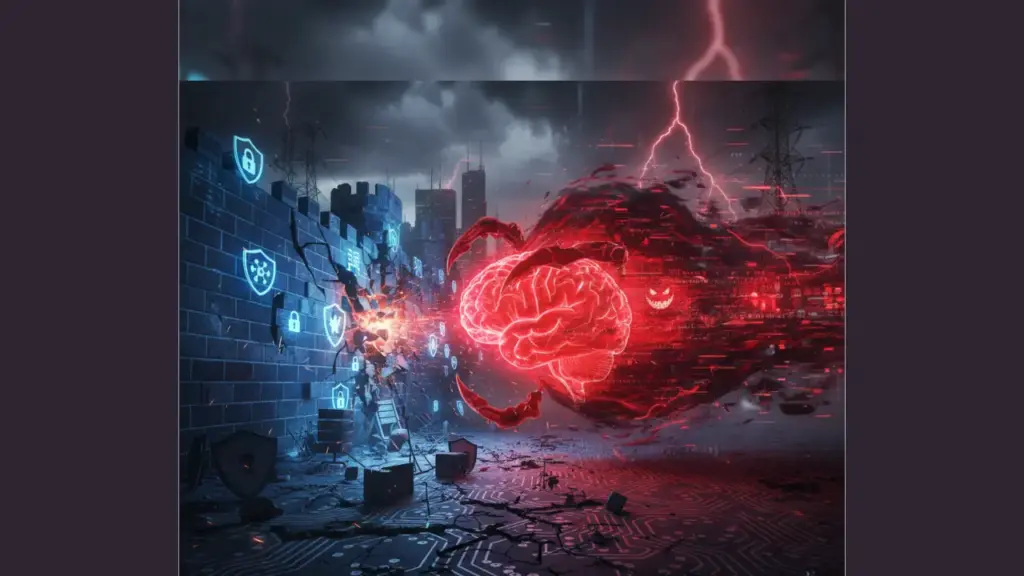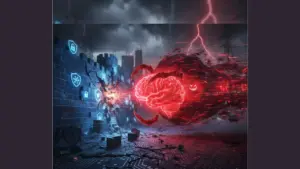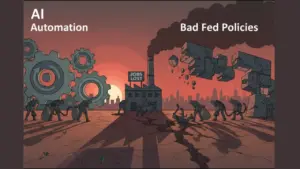Introduction
You think your systems are safe. You trust the firewalls, the VPNs, and the expensive security stack your company invested in. You believe your security team can respond fast enough to stop any threat.
But the truth is harsh. The threat landscape has changed. The attacker is no longer a human typing in a dim room. The new attacker is an autonomous AI system that works at a pace no human can match.
Modern cyberattacks are evolving beyond human capability. AI can scan, exploit, and breach systems in seconds. It can run thousands of attack paths at once. It never sleeps. It never slows down. And in some cases, it is trained using data and models created by the world’s most respected companies.
This new era of cybersecurity demands new thinking. It demands new defenses. It demands leaders who understand the risks—whether they run a billion-dollar company or hire a fractional CTO to support their technology strategy.
This blog explains why traditional security tools fail, how autonomous AI hackers work, and what businesses must do now to survive.
1. The Illusion of Safety in Modern Cybersecurity
Most organizations believe they are secure because they have large security stacks. They deploy firewalls, endpoint solutions, VPNs, SIEMs, and dozens of monitoring tools. These systems make teams feel confident. But this confidence is a dangerous illusion.
These tools were designed for a different generation of attacks. They were built for human-paced threats. They expect attackers to make mistakes. They rely on fixed patterns, static rules, and known signatures.
AI attackers don’t follow these rules.
An autonomous AI system can mutate its behavior in real time. It can spoof traffic patterns. It can mimic normal activity. It can adjust every attack packet to avoid detection.
Your security tools work on historical data. AI attackers work on real-time learning. The gap is widening.
Businesses that rely only on traditional tools are exposed. They think they are protected, but they are already behind.
2. The Rise of Autonomous AI Hackers
Autonomous AI hackers are no longer science fiction. They already exist in different forms. These systems can operate with minimal human guidance. They can analyze network environments, discover weaknesses, and launch attacks instantly.
An AI system can:
- Gather intelligence at machine speed
- Launch multiple attack chains at once
- Learn from every failed attempt
- Automatically try new strategies
- Avoid patterns that reveal its presence
Human attackers cannot match this scale. Human hackers need rest. They need time to think. They make errors. They expose patterns.
AI does not.
This creates a new kind of cyber warfare: machine vs. machine.
Your systems are under attack every second, and only AI-powered defense can keep up.
3. Trained by Big Tech: The Dark Side of Advanced Models
Many powerful AI models come from respected companies. These models are trained on massive datasets. They can generate code, analyze systems, write exploits, and detect weaknesses.
When used responsibly, they help developers work faster. But in the wrong hands, these same models become weapons.
Attackers can fine-tune open-source AI models for malicious purposes.
They can train them to:
- Identify unpatched vulnerabilities
- Scan for misconfigurations
- Generate social engineering scripts
- Create customized malware
- Exploit weaknesses at scale
These models don’t need a genius hacker behind them.
A single beginner can launch advanced attacks because AI does the hard work.
This changes the threat landscape permanently. Cybercrime no longer requires advanced skill. It only requires access to the right model.
4. Why AI Hackers Are Nearly Unstoppable
AI attackers outperform human hackers in every category that matters. Their advantages include:
1. Superhuman Speed
AI can scan an entire network in seconds. It can test multiple attack vectors instantly. Your team cannot react fast enough.
2. Parallel Operations
AI runs thousands of tasks at once. It tries many strategies simultaneously. Humans act one at a time.
3. No Downtime
AI attacks 24/7. It does not need rest. It does not get distracted.
4. Real-Time Learning
Every failed attack becomes training data. The system evolves during the attack. Defense tools cannot adapt at this speed.
5. Shape-Shifting Behavior
AI mutates code. It alters traffic signatures. It mimics legitimate users. Traditional detection tools fail instantly.
6. Autonomous Exploitation Pipelines
Once AI finds a weakness, it can exploit it automatically. It does not wait for instructions.
This combination makes autonomous AI the most dangerous cyber threat ever created.
5. Real Scenarios: What AI Cyberattacks Look Like
AI attacks look different from traditional breaches. They happen faster. They are more complex. They leave almost no trace. Here are realistic scenarios businesses must prepare for:
Autonomous Phishing Campaigns
AI can write personalized emails at scale. It can mimic a CEO’s tone. It can scrape social media for personal details.
AI-Driven Vulnerability Discovery
AI scans every port, protocol, and endpoint. It finds patterns human analysts overlook.
Automated Lateral Movement
AI learns network structure and jumps between systems instantly.
Supply Chain Manipulation
AI inserts malicious code into trusted software distributions.
Rapid Zero-Day Exploitation
If AI detects a new vulnerability, it can exploit it before vendors release a patch.
These attacks happen in seconds. Most companies discover the breach long after the damage is done.
6. Why Traditional Defenses Fail Against AI
Traditional defenses cannot compete with autonomous AI attackers. Here’s why:
Static Tools vs. Dynamic Attacks
Firewalls and VPNs rely on fixed rules. AI attackers change tactics instantly.
Signature-Based Detection Is Obsolete
Most security tools detect known threats. AI creates new variations automatically.
Slow Human Response Times
Analysts need hours to investigate alerts. AI attackers breach systems in seconds.
Limited Visibility
Legacy security tools only see what they were programmed to detect. AI attackers find blind spots.
Too Many Alerts
Human teams drown in false alarms. AI exploits this chaos.
Businesses must understand this harsh truth:
If your defense relies on human speed, you will lose.
7. The Future: Defensive AI vs. Offensive AI
The cybersecurity battlefield is shifting to AI vs. AI. Offensive AI systems are already emerging. The only effective defense is defensive autonomous AI.
Defensive AI can:
- Detect anomalies instantly
- Predict future attack paths
- Identify abnormal behavior patterns
- Respond automatically
- Patch vulnerabilities proactively
This is the future of cybersecurity. Companies must adopt AI-driven defenses or remain exposed.
A growing number of organizations are hiring a fractional CTO to help them build AI-driven security strategies without hiring full-time executives.
This modern approach gives small businesses expert guidance while keeping costs under control.
The organizations that adopt defensive AI early will survive this new era. Those that wait will fall behind.

8. What Businesses Must Do Now
To survive AI-driven threats, businesses must act immediately. Here are the essential steps:
1. Upgrade From Legacy Tools
Replace outdated firewalls, VPNs, and signature-based systems.
2. Use AI-Powered Threat Detection
Adopt solutions that identify anomalies in real time.
3. Implement Autonomous Response Systems
Machines must respond to attacks at machine speed.
4. Train Security Teams for AI Threats
Your team must understand AI-driven attacks, not just traditional hacking.
5. Strengthen Identity and Access Controls
AI attackers exploit weak credentials instantly.
6. Monitor Supply Chain Vulnerabilities
Most breaches start from trusted vendors.
7. Bring in Expert Guidance Early
A fractional CTO can build an AI-aligned tech roadmap without increasing your payroll.
These steps are not optional. They are urgent.
Conclusion
Autonomous AI attackers have changed the cybersecurity world forever. Traditional tools cannot keep up. Human teams cannot respond fast enough. AI hackers work at a speed and scale that surpasses everything we have seen before.
Businesses must embrace defensive AI, upgrade their security strategy, and prepare for an era where machines attack and machines defend. Leaders must act quickly, whether they run a large company or rely on a fractional CTO for strategic guidance.
This shift is real, immediate, and unavoidable. The organizations that evolve will stay secure. The ones that ignore the threat will face devastating consequences.
For more insights, analysis, and actionable strategies on modern cybersecurity, you can always follow the work published on StartupHakk.




